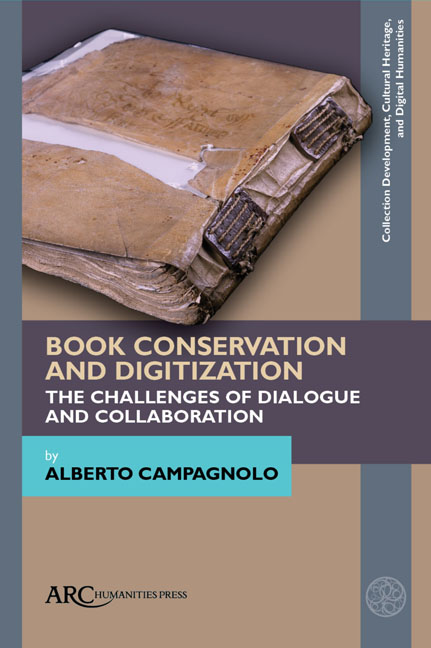Chapter 1 - Understanding the Artifactual Value of Books
Published online by Cambridge University Press: 20 November 2020
Summary
BOOKS, AS MOVABLE objects (of any material) provided with surfaces on which to store and deliver information, are a technology that has evolved, taking different forms and shapes with its progress. From clay, bone, and wooden tablets, to cloth and bark-paper folded concertinas, papyrus scrolls, and parchment and paper codices, books have been part of our culture for millennia.
When we think of the physical aspects of books, as empirically demonstrated by an image search on the web for the keyword “book,” typically we expect to see a book in its codex form, as this is the form with which we are nowadays most familiar, to the point that we simply call them books. Books in codex format are defined as “a collection of sheets of any material, folded double and fastened together at the back or spine, and usually protected by covers.” Despite the variations due to different historical and geographical traditions, codices are characterized by their inner working structure, which has yielded the success of this format: their pages (generally arranged in gatherings) are linked together at the spine, allowing for quick and easy browsing of the content.
The Book as a Black Box
Although often collected exclusively for their content and decoration, books, as cultural objects, present the added value of technological and material data, preserved from another time and place. Like other tools and objects that are readily handled in our everyday life, books are, however, used “unconsciously” and few actually consider— or even notice— their physical form beyond the fact that they work as they are supposed to: they convey information. In order to read a physical book, one does not need any knowledge of bookbinding.
In this sense, to borrow a concept from information science and actor– network theories (ANT), books in codex format are, to the typical user, black boxes. A black box, in these terms, is a technological artifact that, while appearing obvious to the ordinary observer— in the sense that its behaviour is perceived “as known and predicted independently of its context”— can also be regarded as a complex entity, the essence of which depends on a diverse system of techniques, materials, processes, and actions.
- Type
- Chapter
- Information
- Book Conservation and DigitizationThe Challenges of Dialogue and Collaboration, pp. 17 - 48Publisher: Amsterdam University PressPrint publication year: 2020



